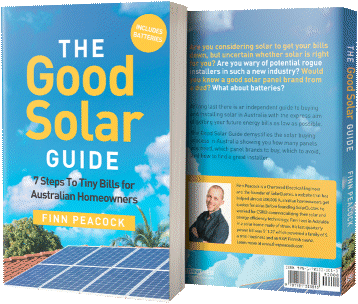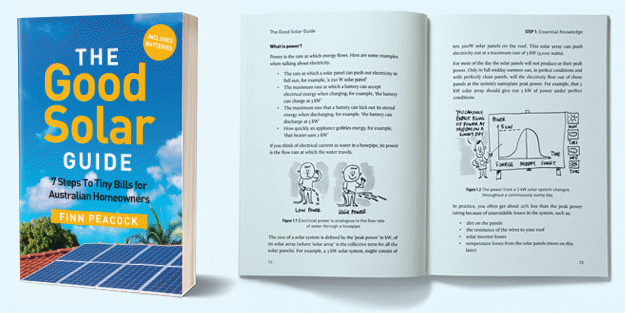
Receiving my MBA certificate from the MBA School of MBA Credentials – after 45 minutes of tuition at Adelaide Fringe.
Every now and then, someone asks: How does SolarQuotes make money?
Fair question. We run a popular site, send thousands of referrals a month, and have a reputation for helping people avoid the dodgy end of the solar market.
So here’s the simple answer: we charge solar installers a fixed fee for each referral we send them. That’s it. No commission, no backend deals, no dark arts. You can see our ‘price list’ here.
But here’s an important aspect of our business model I’ve never discussed in public before: we deliberately leave money on the table. A lot of money.
There are hundreds of ways we could make more. Every so-called ‘growth advisor’ we’ve ever spoken to has a spreadsheet full of them. But almost all of them come with a catch: they make the platform worse. Worse for consumers. Worse for installers. Worse for outcomes.
Here are two examples from opposite ends of our business that show what I mean.
#1 – No auctions for leads.
Basic business theory says if lots of people want something, you should auction it off. Make solar installers bid for each referral. That’s what a ‘rational’ profit-maximiser would do to maximise the value of each sales lead. Plenty of lead generation companies already run this way.
We don’t. We’ve never done it. Our leads are fixed price, published on our site, visible to every installer.
Why?
Because auctions might make us heaps more money, but they make life harder for everyone else. Installers wouldn’t know what they’re paying from one week to the next. Only the highest bidders – the ones with the fattest margins or slickest salespeople – would get through. That brilliant local solo installer just branching out after ten years with a bigger firm? He doesn’t stand a chance. And you, dear reader, pay more for solar.
So we keep it fixed. Because the goal isn’t to extract the last dollar. It’s to make the system fair, sustainable, and useful.
#2 – No misdirection in our ads.
We spend a lot of money on marketing. Google. Facebook. You’ve probably seen our ads. Could we cut those costs in half? Absolutely. Just start running the kind of ads some of our competitors use (such as the ones making misleading claims recently about Labor’s proposed battery rebate):
“Get Solar For ‘No Net Cost’!”
“Rebates Ending!”
“Govt Pays You To Go Solar!”
The problem? They work. Really well.1
But they attract the wrong crowd. People expecting magic. People chasing something for nothing. People who’ll waste time asking good installers about deals spruiked by multi-millionaire cricketers on late-night TV.
So we don’t do it. It costs more to run these ads because they get fewer clicks per impression, but it saves our installers time and keeps our recommendations worth acting on.
Those are just two examples. There are dozens more, baked into how we operate. Decisions made every year – sometimes every week – where we choose not to chase the highest return, because we care more about building something that works for both the consumer and our installers.
It’s a shame they don’t teach this in business school.
In fact, judging by the MBAs I’ve met, I reckon they teach the opposite.
Footnotes
- As to why no one ever gets pinged by the ACCC for these misleading ads, I’m not sure. Maybe because – ethics aside – you could mount an argument for each one being technically true. If your repayments are less than your existing power bills, you could argue it is no-net-cost. Rebates will end – in 2031. And the government-organised SRES scheme gives you money towards solar via STCs (although the money does not come from the government) ↩

 RSS - Posts
RSS - Posts



Speak Your Mind